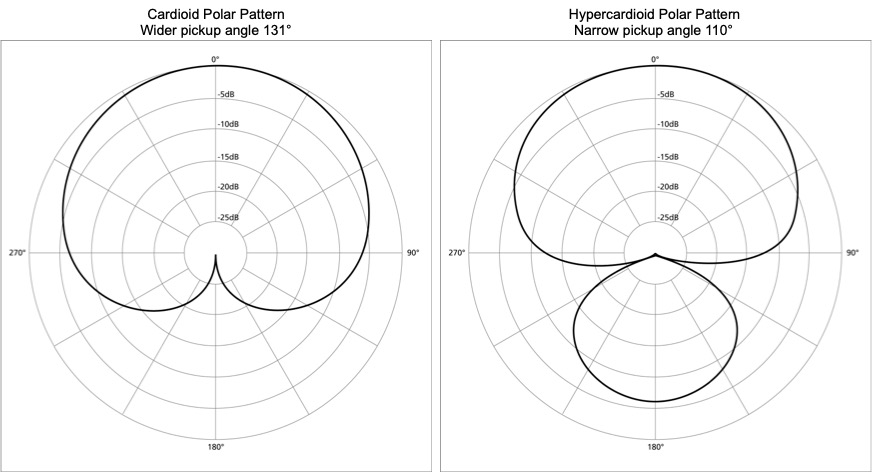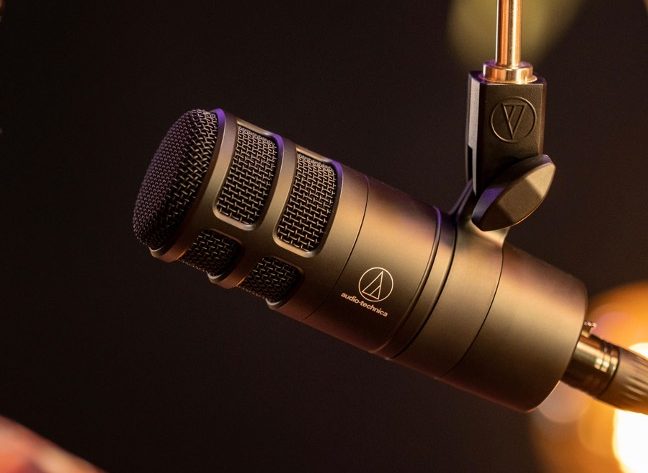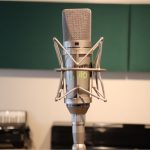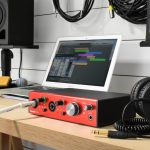A hypercardioid microphone is essentially a cardioid microphone with a more directional pickup pattern at the front. This makes the hypercardioid a more directional microphone than the cardioid microphone. It is most sensitive to sound at the front of the microphone and has null points at 110° and 250° with a rear lobe of sensitivity.
Hypercardioid polar patterns explained
Because hypercardioids are more sensitive to sound originating at the front, they are also least sensitive to sound coming from the sides at 150-160° and 200-210° positions (i.e., rejecting off-axis sounds). This is much less sensitivity than a standard cardioid microphone for sound originating from the sides of the microphone, hence the term “hyper” cardioid.
To illustrate, a cardioid microphone has a useful pickup pattern of up to 131°, while the pickup angle of a supercardioid is 115°. A hypercardioid microphone’s pickup angle is around 105-110°, making it the microphone with the smallest pickup angle at the front. This means that hypercardioid microphones are highly directional, and you will need to point your microphone directly at the source of the audio to capture its sound.
Here is a diagram illustrating the pickup pattern of a hypercardioid microphone vs a standard cardioid mic:

What is a hypercardioid microphone used for?
A hypercardioid microphone is often used for live performances and on-stage vocals where you want maximum rejection of off-axis sounds from the sides. For example, if you are recording in a live band on stage, you may want to get a hypercardioid microphone to capture the vocals without capturing feedback from the surrounding drums or acoustic instruments. A hypercardioid microphone is essentially laser focused at the source of the sound and rejects all unwanted noises and environmental effects.
Because of its ability to reject off-axis sounds, a hypercardioid microphone is ideal for operating in very loud stage environments and minimizing feedback from getting into your microphone. With that said, this means that microphone positioning is essential with a hypercardioid mic – a poorly positioned microphone may result in vocals being cut off if the singer changes position ever so slightly.
One consideration when using a hypercardioid microphone is also its ability to capture sound arriving from the back of the microphone due to its rear lobe of sensitivity. You will need to take this into consideration when placing your hypercardioid microphone on stage to minimize rear feedback (e.g., for example, sound coming directly in front of a singer may be picked up by a hypercardioid at the rear).
Finally, a hypercardioid microphone may have a lot of proximity effect due to its polar pattern (e.g., capturing plosives and low-end frequencies in your vocals). This opens up the avenue to use the microphone in creative ways if you wish to capture the bass and low-end frequency ranges in a piece of equipment or in the vocals. With that said, too much proximity effect may also dampen the music recording and its best to keep the proximity effect under control especially during live performances with accurate placement.
For example, a hypercardioid microphone could be placed at a slightly further distance away from the source to reduce the proximity effect, but is close enough to capture the details and subtle nuances in music performances.
Examples of Hypercardioid Microphones:
- Audio-Technica AT2040 Hypercardioid Dynamic Mic – one of the most widely used hypercardioid microphones for live performances and vocals
- Beyerdynamic M201 TG Classic Hypercardioid Mic – used to capture instrumental sounds with highly directional focus and off-axis rejection
- Audix D4 Hypercardioid Dynamic Microphone – a popular hypercardioid microphone with good feedback rejection and clean vocal pickup
Next Steps
To learn more about microphone polar patterns and the different types of microphones, check out these posts:



